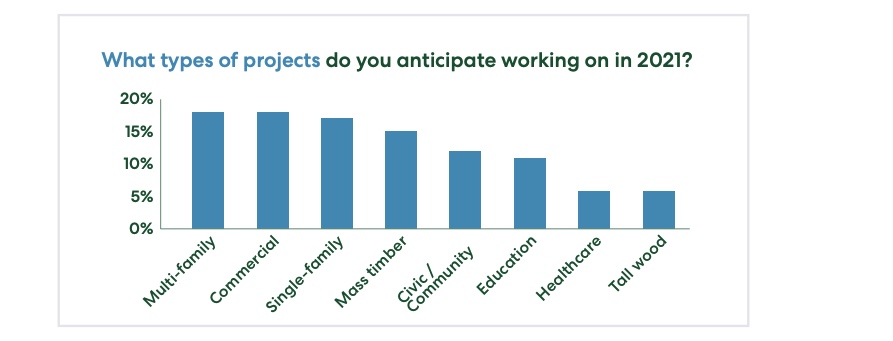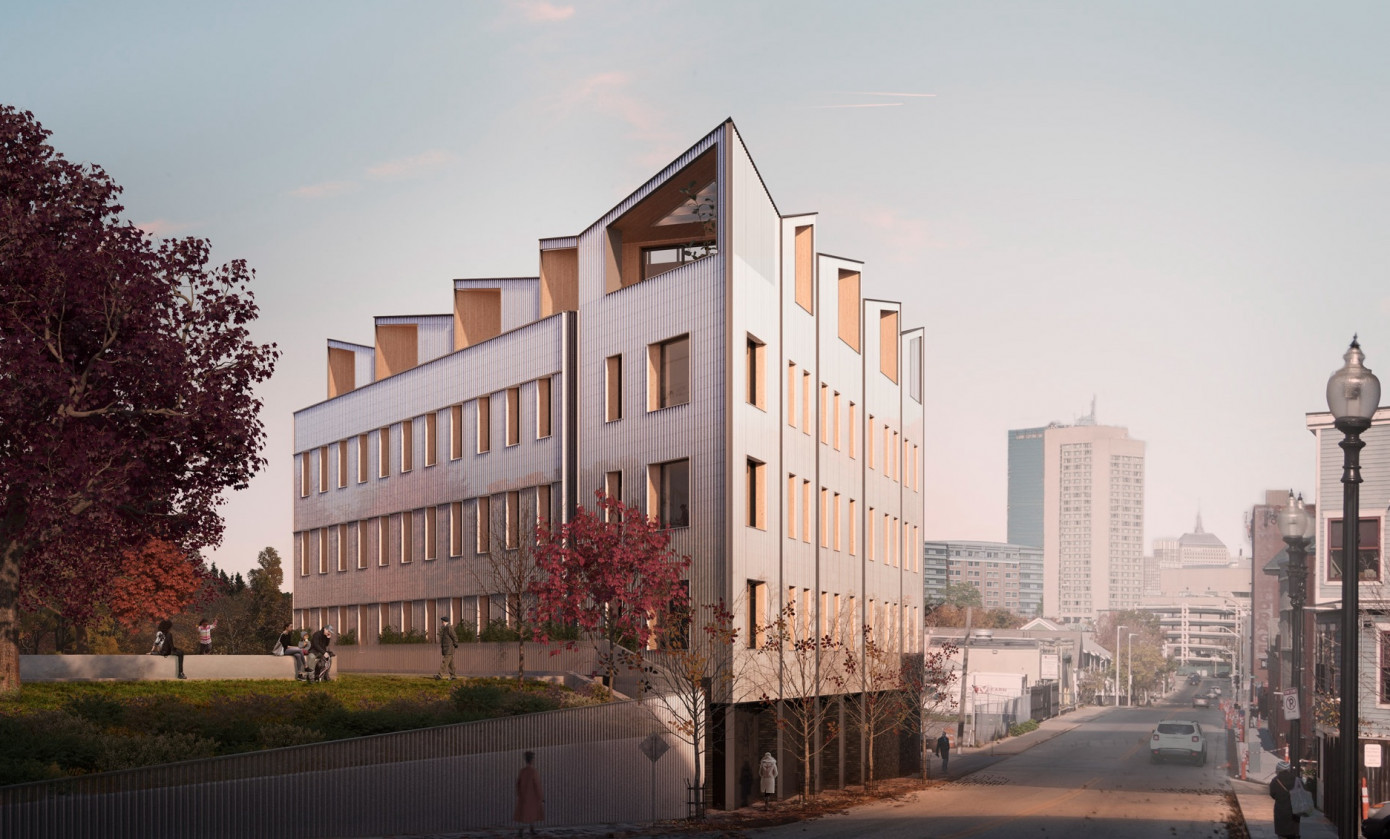Think Wood surveyed 775 U.S. developers, architects, contractors and industry experts to hear their predictions for the top trends in timber construction this year and to understand how the market has shifted in response to the COVID-19 pandemic.
Beyond the construction delays, labor challenges and related economic impacts of 2020, survey participants predict the repercussions of the global pandemic will persist in 2021, primarily impacting projects already in progress. The effects span construction schedules, budgets and emerging post-pandemic design principles. Ramifications for planned projects remain to be seen.

Image: Think Wood
Addressing Climate Change
Trend Forecast Survey respondents predicted low or zero carbon, and green building as the top trending topic of 2021, driven in large part by industry, government and individual firm energy and carbon reduction targets. Despite the COVID-19 pandemic, the nonresidential green buildings market reached approx. $80 billion in 2020 and is expected to reach $103 billion by 2023.
Mass Timber
As of December 2020, WoodWorks reported 1,060 mass timber projects had been constructed or were in design in all 50 United States, and a new report projects that the number of mass timber buildings could double every two years. Changes passed for the 2021 code cycle allow mass timber buildings to be constructed 8 to 18 stories tall, signaling potential increases in overall mass timber construction in new market sectors as well as in higher-density projects.
Prefabrication and Modular
Prefabricated and modular buildings are at the forefront of innovative construction techniques, coming in as the third most anticipated 2021 trend from survey respondents. The building industry is now embracing digital tools like 3D modeling, building information modeling (BIM) and computer numeric control (CNC) machines, making prefabrication and modular construction more common. Modular construction can speed up construction by as much as 50% and cut costs by 20%, according to a 2019 report by McKinsey & Company. It also has the added benefit of being a low-carbon alternative.
Hybrid Construction
Building on the advantages of wood in the built environment, survey respondents predict that hybrid construction will be a major trend in 2021, both in terms of materials and construction techniques. Hybrid building, using structures that incorporate several types of structural materials, may boost digitalisation, enhance sustainability and help control budgets. Hybridtimber construction combines wood with materials such as steel and concrete to deliver a wide range of structural solutions. (Mass timber products often used in hybrid structures include CLT, Glulam and Laminated Veneer Lumber.)
Affordable Housing
According to Harvard University’s State of the Nation’s Housing 2020 report, affordable housing conditions worsened for many in 2020. Even before the pandemic-induced downturn, 37.1 million households (30.2%) spent more than 30% of their incomes on housing in 2019. Timber plays an important role in affordable housing by improving access to economical, comfortable, and sustainable living spaces. Building techniques such as urban infills, adaptive reuseand overbuilds are increasingly becoming a popular development approach to address densification. Adding stories to existing buildings is more feasible with timber because of its lighter weight. Multi-family housing starts increased in 2020, reaching a 30-year high of 426,000 units in the 1Q and wood framing is used in more than 80% of multi-family buildings.
